After visiting the capital Dhaka and taking a voyage to the Sundarbans mangrove forest, Johan Smits continues his Bangladesh travel by road, river and rail, encountering ancient relics and huge, broken ships along the way.
For a fleeting moment I fancy myself as Corto Maltese, the fictional hero of a famous Italian graphic novel series that plays itself out during the first half of the 20th century. I imagine the laconic boat captain would have loved, just like I do now, the 1930s’ battered paddlewheel riverboat I’m travelling on.
My French friend Robert and I are continuing our Bangladesh travel with only a vague and ill-prepared itinerary. It’s not the first time we find ourselves on board the British-built so-called “Rocket” paddlewheel steamer, nowadays one of the country’s slowest but most iconic ships in operation. We took it a week ago to start our journey from the capital Dhaka to the vast Sundarbans mangrove forest in the southwest of Bangladesh. But when on that leg of our trip the journey happened mostly overnight, now we fully appreciate the pleasure of riding the Rocket by day.
As I’m standing on the front deck marvelling at the view, a local passenger tells me we’re currently sailing through the Gabkhan Channel. “It’s our Suez Canal,” he says – I would later learn it was dug during the British colonial period. Some 18 kilometres long, the channel connects two rivers, the Shandha and Shugandha, thereby saving over 100 kilometres between Dhaka and the busy seaport of Mongla. It’s quite a sight to behold.
Before me a seemingly endless stretch of water carves through dense vegetation and inundates the banks making it look as if we’ve entered a half-drowned world, certainly worthy of a place in Corto Maltese’s fantastical universe.
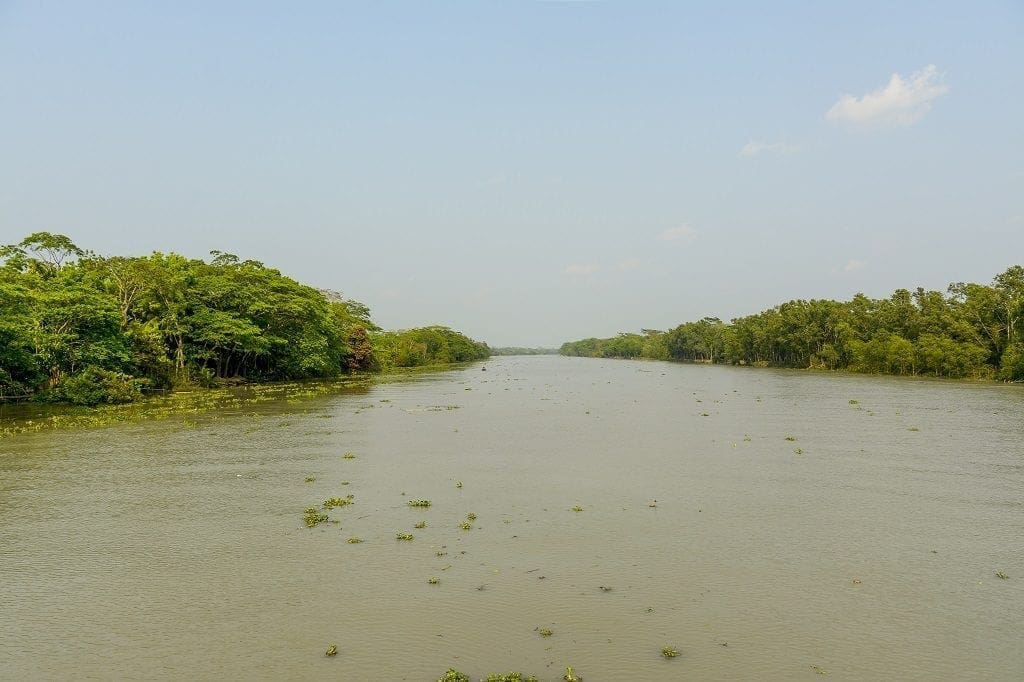
The previous night Robert and I, with the help of some Irish whiskey, had finally cut the knot of where our trip would lead us from the Sundarbans. Instead of going north to Kushtia to attend a folk music festival, we decided to travel east to Chittagong, home to Bangladesh’s largest port. Over a decade ago I had watched the documentary Workingman’s Death by the late Austrian filmmaker Michael Glawogger. It showed labourers breaking down by hand huge, decommissioned supertankers on a beach in Pakistan. I had also read that Chittagong had similar shipbreaking yards, only bigger. If those silver screen images were still haunting me, then the reality must surely be unforgettable. Robert was game.
Our peaceful riverine voyage from the small town of Hularhat where we had embarked, ends just before nightfall in the isolated but characterful port city of Barisal. From here we’ll have to find another boat to the town of Chandpur where a train would finally deliver us to our destination.
It’s a minor miracle that the following morning we manage to locate the ticket office hidden on the third floor of an improbably dusty building stuffed with colonial-era wooden furniture, vintage typewriters and handwritten ledgers – relics of times gone by that would keep on popping up everywhere during the rest of our trip. Yet, no more rides on the romantic Rocket – our next boat, we learn, is one of the popular “launches” or public ferries. Popular because they’re cheap and faster than the antique paddlewheel Rockets, but also a little infamous because they tend to be overcrowded and some have sunk in the past. Moreover, our journey will take place at night. I’m looking forward to it with mixed feelings.
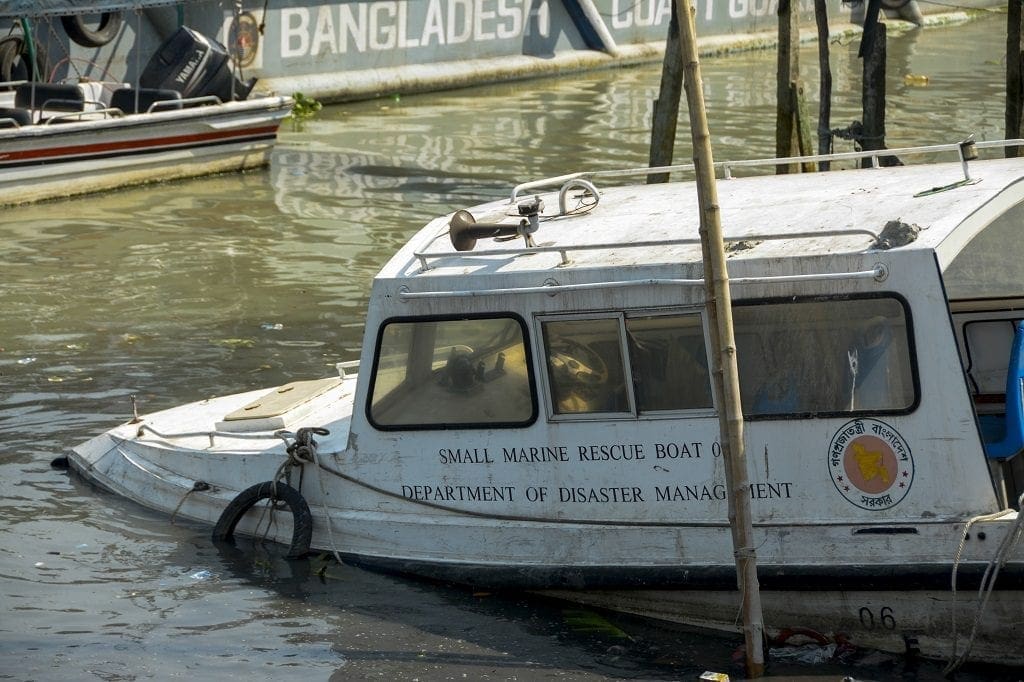
Our night-time departure means we have the whole day left to explore Barisal. An outpost full of crumbling structures and easier to reach by river than by road, the highlight to me is its Barisal Divisional Museum. Absent in our Lonely Planet guide book, we stumble across it by chance. This gem of an archaeological museum opened only four years ago and is housed in the city’s beautifully restored 1821 collectorate building. The galleries on the second floor are filled with centuries-old precious sculptures of Shiva and Buddha made from black stone and sandstone, alongside a host of many other historical treasures. When I sign the visitors book – another outmoded ledger, they must keep a stock of it in Bangladesh – I notice not many foreigners make it to this part of the world.
We do the best we can with what we have
Upon leaving the museum we pass by the director’s office who invites us in for a friendly chat. I compliment him on his beautiful collection and ask if he’s concerned about damage by overly tactile visitors, or even theft, as only some of the treasures are behind protective glass. “We do the best we can with what we have,” is his uncomplaining answer. He thereby confirmed what I already suspected – the equipment and displays in his museum may be worn and dated but they are well cared for. A labour of love.
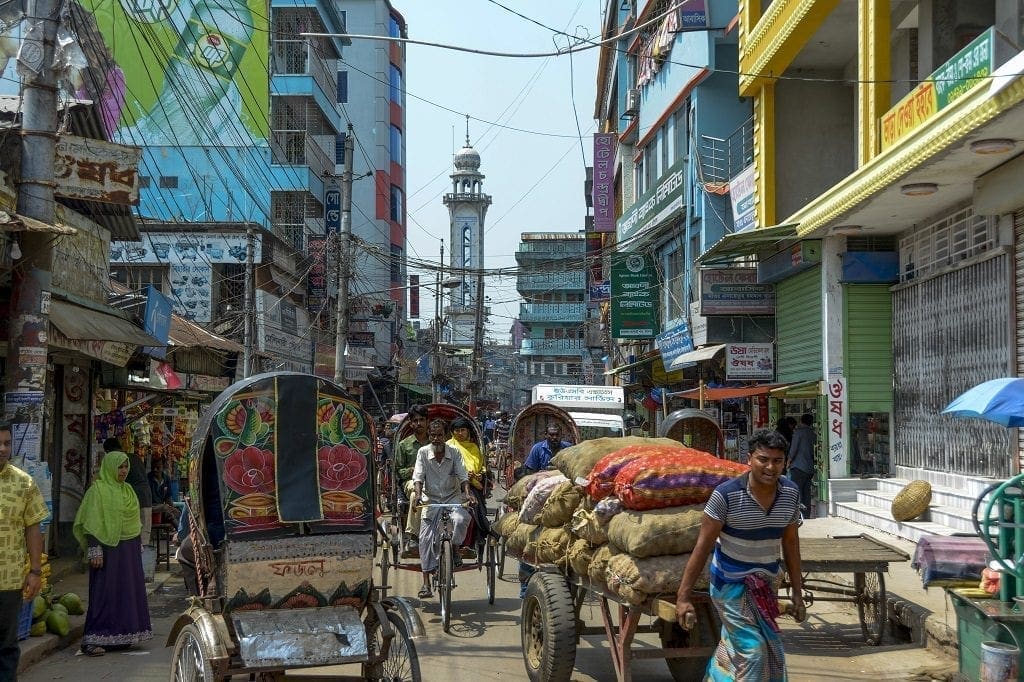
It’s nearing midnight by the time we finally board our boat at its launch ghat, a pontoon buzzing with humanity, chaos and noise as if civil war has broken out. A dozen worn and battered multi-tiered launches, brightly lit, are lined up pressed against each other, and if it weren’t for the helpful assistance of bystanders if would be impossible to guess which one goes whereto and when. An entrepreneurial steward offers us the possibility to hire a cabin – it seems we only have “deck class” tickets – but we politely decline and install ourselves on the upper deck to spend what is surely going to be a sleepless night. If our vessel does a Titanic then at least we can jump off. Corto Maltese would have approved.
In as much as riding the Rocket is the epitome of nostalgia and romance, a nighttime trip on a launch is an exercise in conquering acute anxiety. Overloaded barges, multi-storey ferries, huge freighters and even rubber dinghies crisscross at varying speeds on the ink-black waters all around us. Our launch has one huge headlight that is scanning the waters frantically like a World War II searchlight looking for enemy aircraft. Some of the vessels have their own search lights but many are sailing blindly on a prayer. Moreover, Bangladesh’s waterways have a reputation for being amongst the world’s most dangerous, and our destination of Chandpur, located at the confluence of the Padma, Buriganga and Maghna rivers, is infamous for major boat crashes.
At one point a long, deafening blast from the ship’s foghorn is followed by shouting through a megaphone, causing much hilarity amongst our fellow Bangladeshi passengers. When I ask someone what it’s all about, he explains the captain has just told off an oncoming ship about blinding him with its headlight – spiced up with many expletives apparently. When we finally arrive in Chandpur at dawn, we’re not feeling very rested.
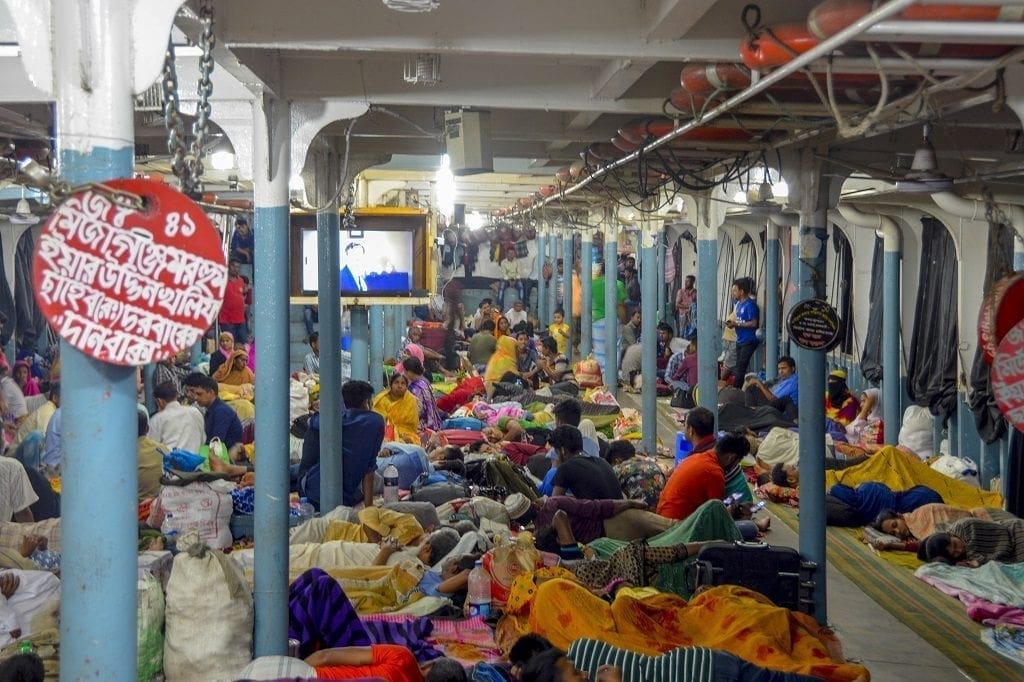
Click here to watch a short video clip of the launch navigating the ink-black waters at night.
Chandpur’s only claim to fame is in it being a major jute-shipping centre, and a brief stroll at noon tells us there’s not all that much to see or do. Robert and I are quite keen to move on. But when we inquire with our guesthouse manager about train tickets, he tells us the train isn’t run that day out of security concerns. Local elections are taking place and in Bangladesh they tend to be quite animated. Suspecting the manager’s advice may also stem from a desire to keep his paying guests another night, we decide to go and check things out by ourselves.
The paper calendar before me confirms we’re still in the year 2019
Entering the station master’s office I mistake it for the set of a period film. His desk is a mini-museum of telephones, from a large operator-run relic via a set of Bakelite rotary dial phones to the more familiar push button versions. But the paper calendar before me confirms we’re still in the year 2019. A cup of tea and a friendly chat later we walk out with two tickets – never mind the elections. Independent Bangladesh travel can be a bit of trial and error, but is fun, friendly and never dull.
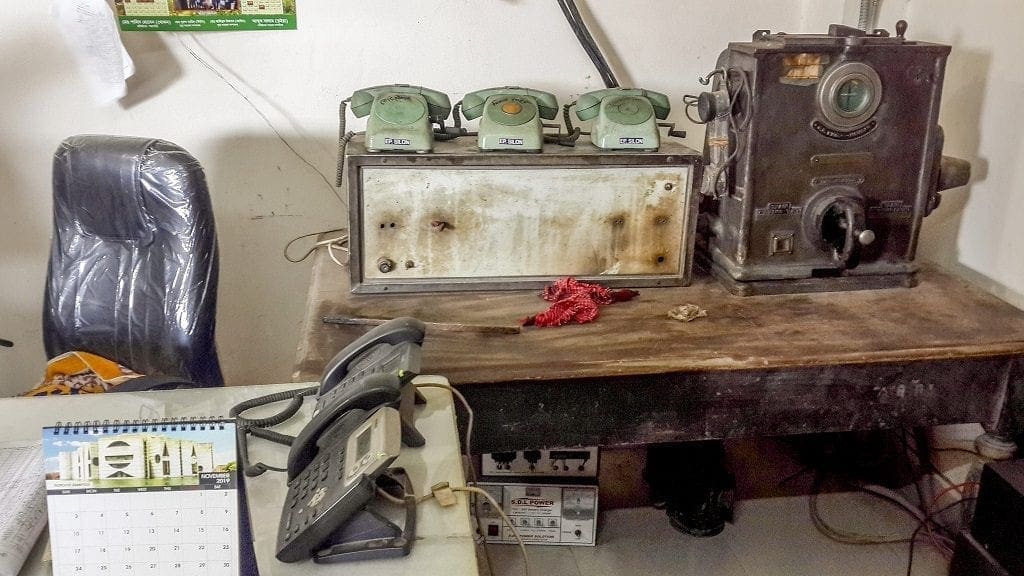
Our ramshackle wagon with its bleak interior and electric fans is packed but not like the tin of sardines I was expecting. Moments before the train chugs into motion, a man sits a young local girl next to me and asks me to look after her. Before I can protest he’s gone. My unexpected parcel is called Miriam, who is 16 years old, speaks a few words of broken English and is quite capable of looking after herself. In fact, it is she who enlightens me about the places we’re passing and our arrival time in Chittagong.
All sorts of vendors board the train at its many stops to sell snacks and drinks, animating our five-hour journey, while Miriam has turned herself into my private tutor of Bengali. Passengers come and go, share food and chat with one another – like we used to do in Europe a few generations ago. What I feared was going to be a gruelling trial turns out to be a pleasant experience. Upon arrival in Chittagong Station a worry takes hold over me – where to deliver my parcel? – but Miriam’s mother is already waiting for her at the platform where we finally say our goodbyes.
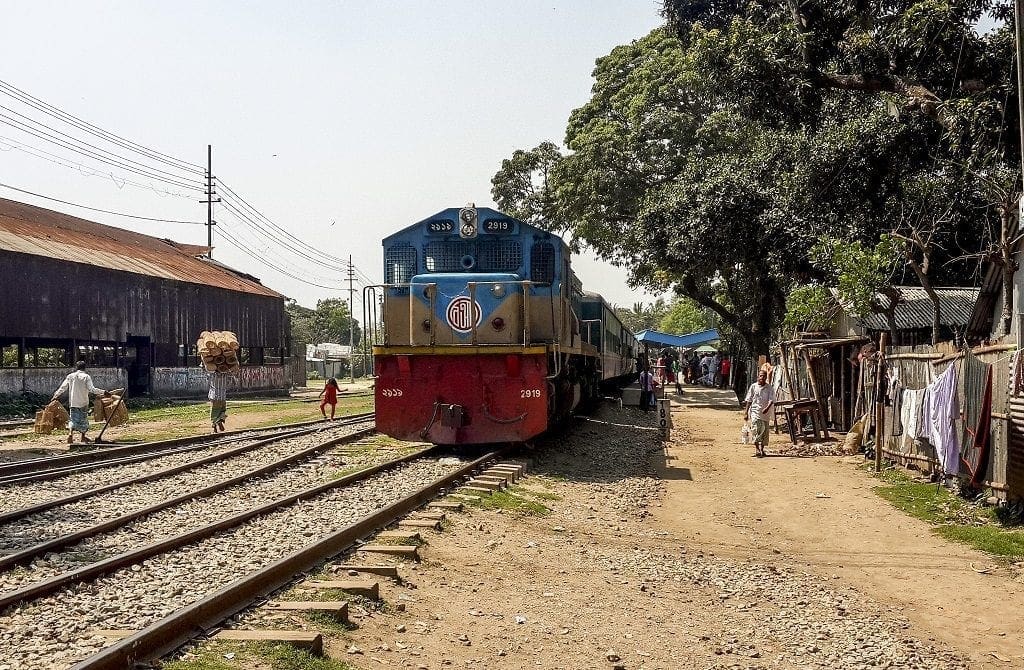
By now I realise that the journey itself is as much of a highlight as the destination, something that has come to define our Bangladesh travel. Nowadays, having become so accustomed to hurrying from point A to point B, usually through stressful airports, we’re numbed into forgetting how enjoyable and rewarding slow, overland travel can be.
Having grown up in Antwerp, itself a major seaport city, I’ve always felt attracted to the promise of travel attached to seafarers arriving and leaving on ships bearing exotic names. Chittagong doesn’t disappoint in that field. Mentioned by the first-century Roman geographer Ptolemy as one of the largest Eastern ports, Chittagong continues to be amongst South Asia’s busiest international seaports with chemical production, engineering, jute and cotton milling, as well as tea and match manufacturing its principal industries.
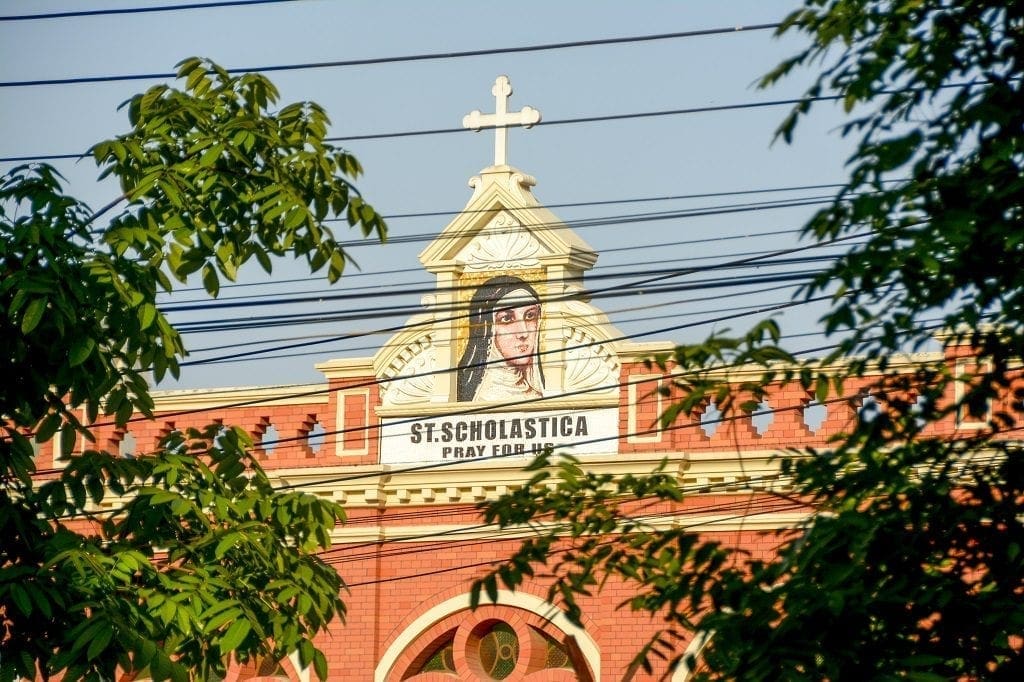
Just like in Dhaka, we find ourselves gravitating towards the city’s historical quarters. In the Paterghatta District the Catholic Church and its cemetery full of tombstones inscribed with Portuguese names are testimony to Bengal’s first European colonial settlement in the 16th century. Later, a visit to the Ethnological Museum teaches us about the city’s ethnic diversity. In addition to the overwhelming Bengali Muslim majority, and the Bengali Christians and Buddhists, other ethnicities include Marmas, Chakmas, Rohingyas, Rakhines and Bohmong. Not so surprising given the city’s location at the foothills of the magnificent Chittagong Hill Tracts, home to dozens of different tribal populations.
Come evening we join the locals at the waterfront watching the sunset and seeking reprieve from the city’s noise and congestion. The juxtaposition of brightly-dressed families enjoying a snack or drink under multi-coloured parasols, and the gritty, industrial setting of polluting cargo ships and industrial wasteland, is staggering but fascinating.
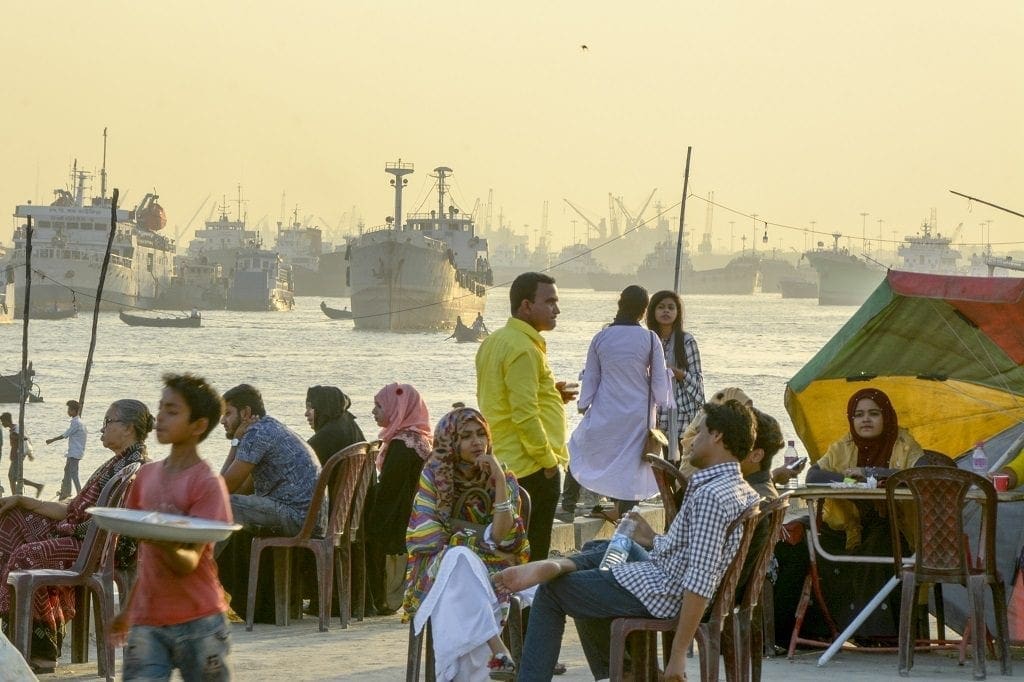
Meanwhile, our inquiries about the shipbreaking yards lead to disappointment. Visitors are now unwelcome after past exposure by foreign media and NGOs of the industry’s deadly working conditions and use of child labour. Yet, we do find a driver willing to bring us there and an hour later we’re approaching on foot, across marshy grasslands, partly-disassembled, giant cargo ships stranded on shore.
Their sheer size, and the idea of armies of workers cutting up these vast, steel behemoths piece by piece and by hand, is shocking. It’s also quite impossible to be discreet in a wide open field, and before long we’re spotted by hostile security guards who chase us away. A second attempt further down the coast has us sneaking through slums of shipbreaking labourers whose terrible living conditions amongst oil-polluted ponds says enough about their treatment without witnessing them in action.
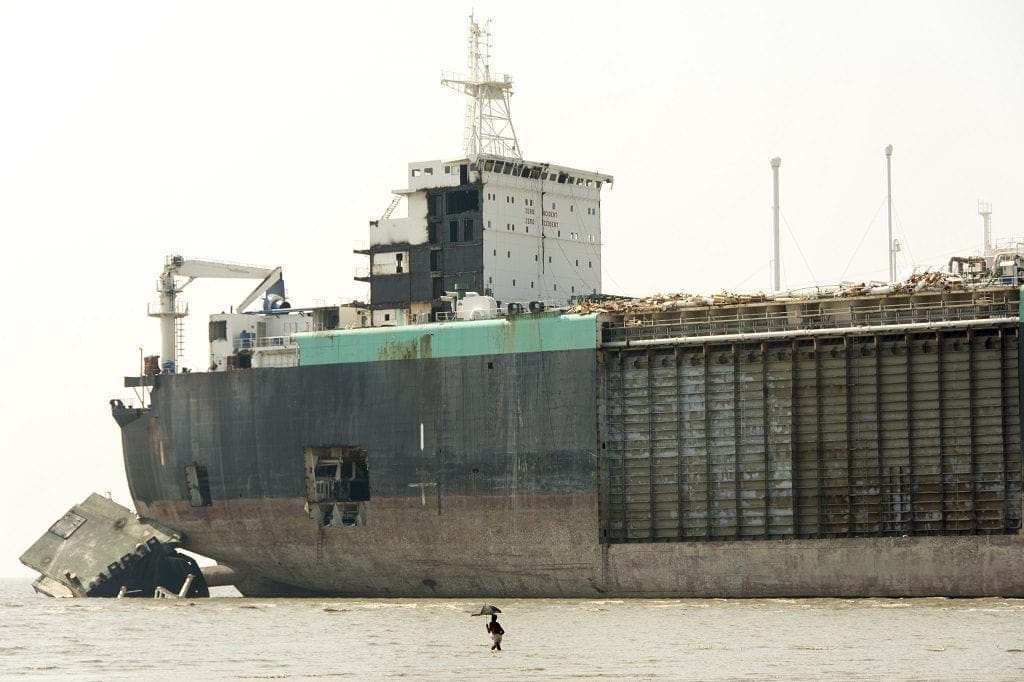
Much has been written about the shipbreaking yards industry that is well beyond the scope of this article. The extremely dangerous, inhumane working conditions and its environmental pollution for starters. But also the role of developed nations whose ships end up here, the important income it provides Bangladesh with, and the benefit of recycling millions of tons of steel. It’s just one amongst many a contradiction of Bangladesh travel that will surely challenge your values, or even your view of the world as a whole – and that may not always be a bad thing. Although pragmatic and befriending people of all walks of life, Captain Corto Maltese instinctively supported the disadvantaged. I wonder what he would have made of all this.
Bangladesh travel photo gallery
Independent versus organised Bangladesh travel
Independent travel in Bangladesh is adventurous and very much feasible, partly thanks to the friendliness and helpfulness of local people. However, it can also be quite unpredictable – if you prefer your Bangladesh travel to be more organised, you could contact a reputable local tour agency such as Nijhoom Tours.
For more Bangladesh topics, read our colourful photo essay about Bangladesh rickshaw art.
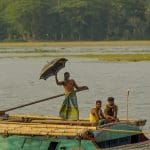
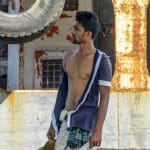
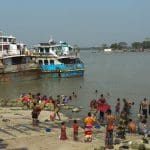
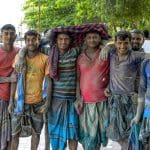
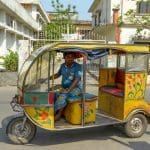

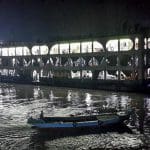

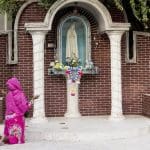
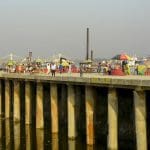
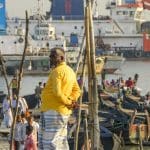
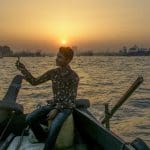
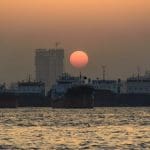
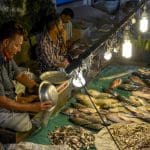
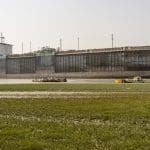
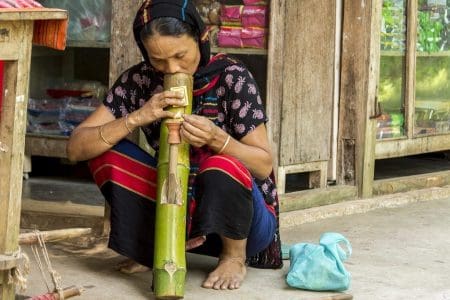
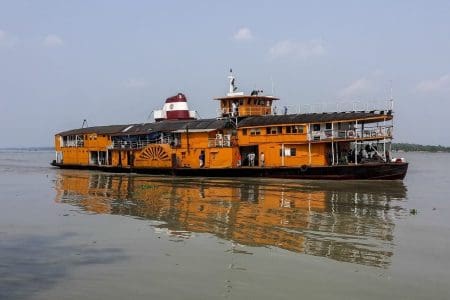
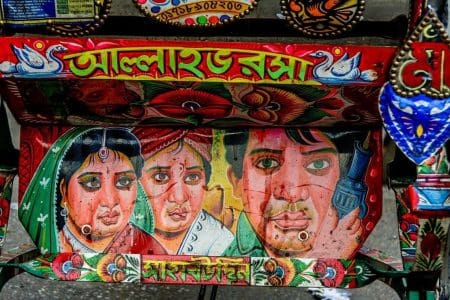
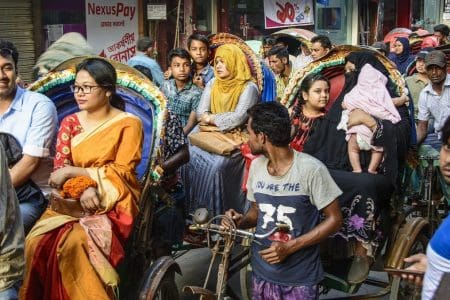
Hi Johan,
Another great experience of traveling to Bangladesh and lovely photos! I thoroughly enjoyed reading it. Thanks for recommending us!
For those who are looking for organized travel to Bangladesh, here is a list of our tour packages to choose from: http://bit.ly/2Lc8jav
Raw Hasan
Founder & CEO | Nijhoom Tours
Thanks Hasan, great to hear you enjoyed the read!
Hi Johan, I thoroughly enjoyed your articles. It was great to “see” my country (which I have not visited for years) and home city in your writing . Thank you :)
Thank you for your feedback. We will pass on yur comments to Johan. Glad that you enjoyed the articles.